Table of Contents
Toggle
A. Introduction
In cities where atmospheric pollution already poses a threat to public health, the rise in greenhouse gases brought on by transportation is now causing serious worry. This increasing hazard emphasizes how urgently transportation plans—especially in metropolitan areas—must be changed to solve negative environmental and health effects.
As we look forward to 2025, the concept of sustainable transportation is poised to transform the way we travel about our cities and connect with one another. Sustainable mobility comprises a number of modalities, including electric vehicles, public transit, cycling, and walking, all aimed at lowering carbon emissions and boosting urban livability.
Rising Concerns Over Transport-Related Greenhouse Gas Emissions
1. The Importance of Sustainable Transportation
Sustainable transportation is considered crucial for the future of transportation, primarily due to its role in reducing the damaging effects of CO2 emissions. Beyond environmental benefits, it is also a key driver in the development of smart cities, contributing to smarter, more integrated urban planning and mobility solutions.
2. Addressing Social Exclusion and Service Gaps
Apart from encouraging improved mobility, sustainable transportation is very essential for eliminating the social isolation of impoverished groups. Solving the first-last mile issue guarantees that transportation is available to everyone, especially in undeveloped areas, hence filling critical shortages in current services.
3. Health, Air Quality, and the Path to Greener Mobility
The broad adoption of sustainable transportation is predicted to lead to considerable improvements in air quality and citizen health. It will help expedite the shift to greener, more eco-friendly mobility in cities, harmonizing with present and future sustainability goals.
4. Future Trends in Sustainable Transportation
Looking ahead, sustainable transportation is positioned to continue evolving. Key trends and advances will influence the future of urban mobility, helping cities reach sustainability targets and improve the quality of life for their citizens.
B. Current Decarbonization Efforts in Sustainable Transportation
Major decarbonization activities are already in motion across the globe, and these initiatives should keep rising in the future. Current plans focus on shifting to lower-carbon fuels, boosting vehicle efficiency, and optimizing system and operational performance within the transport industry. These efforts aim to lower the sector’s carbon footprint and promote sustainability.
1. Emerging Trends in Sustainable Transportation

Key trends include the rising adoption and sharing of electric vehicles (EVs) and autonomous vehicles (AVs), which are becoming more integrated into urban mobility. Urban planning that supports compact development and the use of congestion pricing is also becoming more common in places with significant traffic. These methods promote sustainable travel options, including car-sharing, biking, walking, and mass transit, contributing to a greener future for urban mobility.
2. The Role of Autonomous Vehicles in the Future of sustainable Transportation
In the future, AVs are predicted to make travel even more efficient and sustainable. With the ability to attain faster speeds, reduce fuel wastage, and minimize congestion utilizing artificial intelligence and modern technologies, AVs could transform urban transportation. Additionally, AVs, along with drones, are destined to change city deliveries by applying AI to minimize congestion, save fuel, and maximize resources.
3. High-Speed Rail and Advanced Transportation Technologies
Emerging modes of travel, such as high-speed rail and magnetic levitation technology, hold the potential to set new speed records for ground transportation. These technologies not only offer speedier travel times but also have the capacity to employ non-emitting sources of electricity, thus contributing to the decarbonization of the transport industry.
4. Alternative Fuels: A Path to Zero Emissions
Since most transport-related emissions arise from the combustion of petroleum, the widespread use of alternative fuels might theoretically bring emissions down to zero. Viable alternatives include ethanol, natural gas, biofuels, hydrogen, and electricity. However, their environmental advantages will depend on whether these fuels can be produced from non-carbon origins.
5. The Role of Electricity in Reducing Emissions
Electricity is a promising alternative fuel that could power most road vehicles. Coupled with decarbonizing the power sector, electricity could lead to considerable reductions in emissions. EVs in particular, contribute to decarbonization by delivering mobile energy storage, which can help incorporate intermittent renewable energy sources like wind and solar. However, difficulties such as high battery costs and a lack of charging infrastructure remain impediments to full electrification.
6. Scaling Up Non-Petroleum-Based Fuels
The introduction of alternative fuels such as natural gas, biofuels, hydrogen, and electricity requires rigorous management to guarantee their manufacturing processes do not raise emissions. Additionally, scaling up these fuels means creating the required infrastructure to support their widespread usage, which is vital for the long-term success of decarbonizing the transportation sector.
C. Advancing Sustainable Transportation
Increasing the usage of electrified transit is a reasonably basic strategy to make cities more sustainable. Doing so will lead to better air quality, fewer emissions, and lower noise levels. The technology is already available for trains, buses, and smaller vehicles such as cars and trucks.
A big difficulty for cities moving forward with this is ensuring that regional electrical systems can accommodate the sudden surge in power demand. Allocating the essential finance for the deployment of recharging infrastructure and refueling facilities will be critical for bridging present gaps, particularly in the context of long-distance travel and in rural locations.
1. High-speed trains
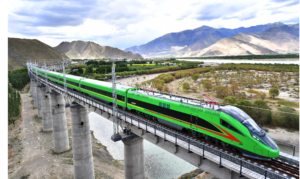
Often touted as the single biggest climate solution able to decarbonize most of the transportation industry and do it rather quickly is high-speed rail. This covers replacing most domestic flights, up to half of vehicle trips, and current e-commerce distribution systems depending on energy-intensive, cross-country trucks and airplanes. Additionally, an electrically driven, high-speed train may run 100% on safe, clean renewable energy. A single high-speed rail running on wind-powered electricity is thought to be able to carry nine times more passengers than a standard aircraft.
2. Hydrogen Automobiles
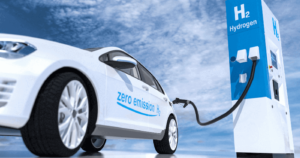
Hydrogen buses are essentially zero-emission, with better-proven efficiency that is superior than conventional internal combustion engines, meaning they take less fuel to travel the same distance. Batteries in these environmentally friendly buses let hydrogen come into contact with oxygen and generate power. Since hydrogen vehicles emit only water vapor, they produce no harmful exhaust emissions, making them a perfect zero-emission solution for public transportation.
With an established range of up to 350 miles, their range and performance makes them appropriate to be a one-to-one vehicle replacement to conventional fuels, and it doesn’t disrupt existing route planning and operations in any manner. Finally, at almost any bus filling station intended for hydrogen delivery or onsite hydrogen generation, fuel cell buses may be refueled remarkably fast in about 7-10 minutes.
3. Bus Rapid Transit (BRT)

High-quality bus transit systems meant to provide quick, convenient, and reasonably priced services at metro-level capacities are known as Bus Rapid Transit (BRT). This is done through the incorporation of dedicated bus lanes that are often positioned in popular public locations, such as the middle of the road, where people can quickly hop on and off. These buses are mainly battery-powered electric buses or hybrids and are already running in several regions of the world, notably in heavily populated countries.
BRT is widely praised as one of the most efficient ways of providing public transportation services in metropolitan areas and has done fantastic in alleviating congestion and lowering air pollution.
D. Addressing First and Last-Mile Challenges of Sustainable Transportation
Incorporating shared mobility choices into existing networks and public transit helps address the first- and last-mile challenge, filling gaps in services and extending the areas serviced—an issue particularly prominent in rural locations. Digital technology that enables automated mobility and smart traffic control systems will enhance efficiency for transit authorities while also making transport greener.
1. Enhancing Customer Experience
Smart apps and Mobility as a Service solutions will play a significant role in delivering more options to residents, enhancing customer experience, and attracting more people to mass transit and other eco-friendly modes over their cars. In the future, a variety of measures will be needed to handle air quality, pollution, urban congestion, and noise, concentrating around enhancing public transit and supporting more active forms of transport like walking and cycling.
2. The Rise of Shared Mobility
In recent years, we’ve witnessed a tremendous increase in the use of shared mobility. Traditional options, including bikes, skates, and skateboards, have grown to include new modes such as electric scooters, hoverboards, segways, and electric cycles. These developing transport modalities are generally ecologically benign and have significant promise for expanding public transit utilization.
3. Electric Bikes and Their Impact
Electric bikes, in particular, are fast gaining favor in cities as a viable alternative to cars for short- to medium-distance excursions, effectively lowering CO2 emissions. A 5% increase in journeys done by electric bicycles or comparable mobility options instead of cars could cut CO2 emissions by 7%, equivalent to taking approximately 134 million cars off the road by 2030.
4. Challenges with Electric Scooters
While electric scooters produce less CO2 than vehicles, they nevertheless generate more emissions than public transport. Although they can be used for short automobile excursions, their usage tends to be individual, and they have a relatively short lifespan of one and a half to three years. Maintenance and vandalism difficulties with rentals also raise worries about their sustainability as a future travel choice.
E. Other Types of Sustainable Vehicles
Fuel-efficient vehicles will be essential in facilitating a sustainable future for mobility in cities by replacing conventional vehicles and improving the air quality in urban areas. Fuel-efficient automobiles take less fuel to run as comparison to older types of vehicles. Residents will be able to save money on fuel and will not have to depend on frequently fluctuating fuel prices. Additionally, there will be fewer greenhouse gasses being emitted into the sky.
1. All-Electric Vehicles

EVs are defined as all-electric vehicles that run completely on electricity. They are propelled by a single or many electric motors that are fuelled through rechargeable battery packs. EVs give various advantages over traditional vehicles, one of them being their great energy efficiency. EVs can convert over 77% of the electrical energy derived from the grid and utilize it to power the wheels. Regular gasoline vehicles are only able to convert roughly 12%–30% of the energy stored in gasoline, making them significantly more inefficient.
When it comes to performance, EVs are much quieter than traditional vehicles, as their motors deliver a smoother driver experience and stronger acceleration, requiring less maintenance than internal combustion engines (ICEs). In the future, EVs are predicted to reduce noise and air pollution in cities, along with lessening our reliance on foreign fuels since power can be produced domestically.
2. Hybrid Electric Vehicles
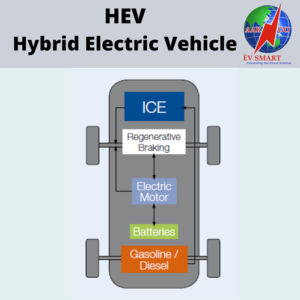
Hybrid Electric Vehicles (HEVs) use an internal combustion engine along with one or more electric motors powered by energy stored in batteries. They include the benefits of gasoline engines along with those of electric motors and can be customized to suit specific goals, dependent on the intended outcome such as improved fuel economy or higher power.
The energy-saving capabilities of Hybrids come down to their capacity to recuperate energy ordinarily lost while coasting or braking. The electric motor drive/assist function gives more power to aid the engine in accelerating, passing, or climbing a hill, enabling for a smaller and more economical engine to be employed in these vehicles.
The stop/start function automatically shuts off the engine when the car comes to a halt and restarts it as soon as the accelerator is touched, something that has been proven to save wasted energy from idling. Together, these measures can result in higher fuel economy without actually compromising performance. There is a large choice of HEV models currently available on the market and although they can be more expensive than identical conventional vehicles, expenses can be recovered through fuel savings or state incentives.
3. Plug-In Hybrid Electric Vehicles

Plug-in hybrids, sometimes referred to as Plug-in Hybrid-Electric Vehicles (PHEVs), are defined as hybrids with high-capacity batteries. These types of vehicles can be charged by connecting them to an electrical outlet or at a charging station. They are also capable of storing enough electricity to effectively cut their usage of petroleum under regular driving conditions.
Plug-in hybrids such as the Extended Range Electric Vehicles (EREVs) can run completely on electricity until the battery runs out, in which case the gasoline engine can generate electricity to fuel the engine. For short trips, these vehicles might not require fuel at all. Plug-in hybrids are reported to utilize roughly 30% to 60% less petroleum than typical conventional vehicles.
Furthermore, since the electricity needed to power them is produced primarily from domestic resources, plug-in hybrids help minimize oil dependence. So far, plug-in hybrids cost around $4 to $8 thousand more when compared to a non-plug-in hybrid while future cost-savings are projected to be more based on the assumption that electricity is cheaper than gasoline. There are Federal tax incentives currently available equating to up to $7,500 for any qualified plug-ins.
F. Developing Infrastructure to Charge Electric Vehicles
1. The Importance of Public Charging Stations
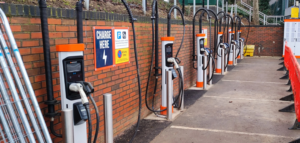
While current trends in charging infrastructure focus on EV users’ demand for home charging, accessible public charging stations are becoming increasingly vital to ensure convenience and accessibility for all. Both consumers and businesses that rely on electric vehicles (EVs), including all-electric and plug-in hybrid electric vehicles (PHEVs), need access to charging stations. This access should include options to charge vehicles at home as well as at various charging facilities throughout cities.
2. Enhancing Charging Options
Installing charging stations at workplaces and public spaces will be crucial for increasing the adoption of EVs. This strategy is expected to boost market acceptance by providing flexible charging options in convenient locations for users, thereby encouraging more people to switch to electric vehicles.
3. Tools for Infrastructure Planning
Instruments like the EVI-Pro Lite tool are available for public authorities to identify the quantity and type of charging infrastructure needed to support regional adoption of EVs across states, cities, and urban areas. This tool will also help determine the impact of EV charging on electricity demand.
4. Building a Robust Charging Network
As the number of EVs continues to grow, a robust network of charging stations will be essential for both consumers and fleets. The Alternative Fueling Station Locator is one such resource that allows EV users to search for and locate various public and private charging stations.
5. Standardization in Charging Infrastructure
To ensure consistency in charging infrastructure, a common standard has been established within the industry. The Open Charge Point Interface (OCPI) protocol outlines the requirements for what charging stations must provide, facilitating interoperability and user convenience.
G. The Future of Sustainable Fuels
1. Diverse Range of Alternatives
The future of sustainable travel will rely on diverse alternatives, such as electricity, hydrogen, and renewable fuels. The urgent need to reduce transport-related emissions serves as the fundamental force for change, with a consensus that integrating all viable alternatives will be essential.
2. The Rise of Renewable Fuels
Renewable fuels are produced from renewable resources rather than conventional fossil fuels, and they have gained popularity due to their sustainability and potential to significantly reduce greenhouse gas emissions. In 2020, for example, over 239 million liters of biofuels replaced more than 209 million liters of fossil fuels, resulting in the avoidance of 520 ktCO2eq of greenhouse gas emissions.
3. Clean Fuel and Technology Integration
Most sustainable transportation options rely on clean fuel, batteries, or a combination of both. Alternative fuels can be utilized in flexible-fuel and dual-fuel vehicles, as well as in advanced technology vehicles such as hybrids and fuel cells. These alternative fuels contribute to fuel conservation, enhanced air quality, and additional cost savings.
4. Examples of Alternative Fuels
Some notable examples include biodiesel, which is similar to petroleum diesel and can be produced domestically, reducing dependence on foreign fuels. Electricity powers electric vehicles (EVs), including battery-electric vehicles (BEVs) and plug-in hybrid electric vehicles (PHEVs). Battery recharging can occur through grid participation and other off-board electrical power sources.
5. Hybrid and Plug-In Technologies
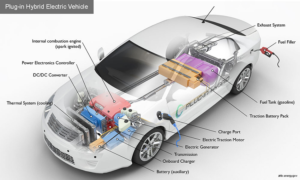
Hybrid electric vehicles (HEVs) use liquid fuels like gasoline alongside small batteries that conserve energy through regenerative braking. PHEVs offer the flexibility of using off-board electricity for power while retaining the capability to run on liquid fuels, functioning as HEVs when necessary.
6. The Role of Ethanol and Green Hydrogen
Ethanol, a renewable fuel derived from plant resources, is expected to see higher absorption rates in the future, continuing its historical use in gasoline blends. Meanwhile, green hydrogen will play a crucial role in the transition to greener energy sources for transport, particularly during peak power demand periods.
7. Future of Natural Gas and Propane
Natural gas is predicted to be produced in a fully renewable manner, transforming it into a clean-burning alternative fuel. Propane is also anticipated to contribute to the future landscape of sustainable fuels, although it does emit a lower quantity of carbon dioxide compared to traditional fossil fuels.
H. Developments In Vehicle Batteries
The widespread use of Electric automobiles and battery recycling has enormous possibilities for developing a truly sustainable future. Residents of cities would have the option of installing charging stations at home as well as opting for renewable energy sources. Battery technology has played a crucial role in the development and popularization of electric cars, with advances in technology having drastically improved the performance, range, and reliability of electric cars, making them a far more stable and viable alternative when compared to traditional gasoline-powered vehicles.
1. Lithium-ion batteries
The most popular type of battery used in electric automobiles nowadays is Lithium-ion batteries. They give various advantages over other types of batteries, including better levels of energy density, longer cycle life, and reduced self-discharge rates. The batteries are also relatively compact and lightweight, making them the perfect choice to use for electric cars. Lithium-ion batteries, however, are not without their drawback, coming with a pretty high production cost, significant safety issues, and limited possibilities when it comes to recycling.
2. Solid-state batteries
Another interesting new technology is the one shown in Solid-state batteries, which delivers significant advantages over existing lithium-ion batteries. These batteries use a solid electrolyte as opposed to a liquid electrolyte, which can boost energy density, minimize the risk of fire, and prolong the life of the battery. Solid-state batteries are also projected to be able to charge faster and be more ecologically friendly than standard lithium-ion batteries. The major setback so far is that solid-state batteries are still in their developmental phase and are not readily available for use in electric automobiles just yet.
I. The Importance of Battery Disposal and Recycling
1. Growing Need for Efficient Battery Recycling
As electric cars gain popularity, the efficient disposal and recycling of batteries will become increasingly important. Battery recycling is a vital step in reducing the environmental impact of future transportation and conserving valuable resources.
2. Valuable Materials in Electric Car Batteries
Electric car batteries contain various materials, including lithium, cobalt, nickel, and other metals, that can be reused and repurposed. Recycling these batteries can help recover these resources, thereby decreasing the need for additional mining activities that negatively impact the environment.
J. Conclusion
Progress Toward Sustainable Transportation
1. Increasing awareness and Eco-Friendly Choices
While we are still far from achieving global sustainable transportation, significant progress is being made toward greener transit options in cities. People are becoming more aware of the effects transportation has on their health and the environment, leading to a shift toward more eco-friendly choices and increased instances of leaving cars at home.
2. Innovations and New Opportunities
As new modes of travel and opportunities emerge, we can expect to see many advancements in the transportation sector. The integration of new and developing technologies will play a crucial role in bringing us closer to sustainable living.
3. Transformative vision
Sustainable transportation is a transformative vision for the future, where travel is efficient, fair, and environmentally responsible. Globally, this would involve a complex approach, incorporating multiple mobility options, from electric vehicles and public transit to cycling and walking. It highlights the necessity of accessibility, ensuring that all individuals, regardless of location or socioeconomic level, have viable options for travel.
The successful shift to sustainable mobility relies on innovative technologies, resilient infrastructure, and a commitment to recycling and resource conservation. By emphasizing renewable energy sources, supporting shared mobility, and investing in the appropriate infrastructure, communities may drastically reduce their carbon footprints and boost air quality.
Ultimately, sustainable transport is not just about decreasing emissions; it’s about supporting healthier communities, promoting social fairness, and conserving the earth for future generations. As awareness rises and the demand for greener options increases, we have the opportunity to transform how we travel and connect, paving the way for a more sustainable society. The journey towards this vision involves collaboration among governments, corporations, and individuals, but the rewards—cleaner air, better lives, and a healthy planet—are well worth the effort.
K. FAQs
1. What are the key features of sustainable transportation systems expected in 2025?
Electric vehicles (EVs) and hydrogen-powered vehicles are projected to play a crucial role in reducing greenhouse gas emissions from the transportation sector. By 2025, advancements in battery technology and hydrogen fuel production are expected to make these vehicles more accessible and affordable. Countries like Germany and the US are already testing hydrogen trains, which could revolutionize rail transport by providing zero-emission alternatives
4. How will cities address the challenges of charging infrastructure for electric vehicles by 2025?
L. Video
The following video would be helpful for the readers:
Green Moves ( Courtesy: Biotech Whisperer)




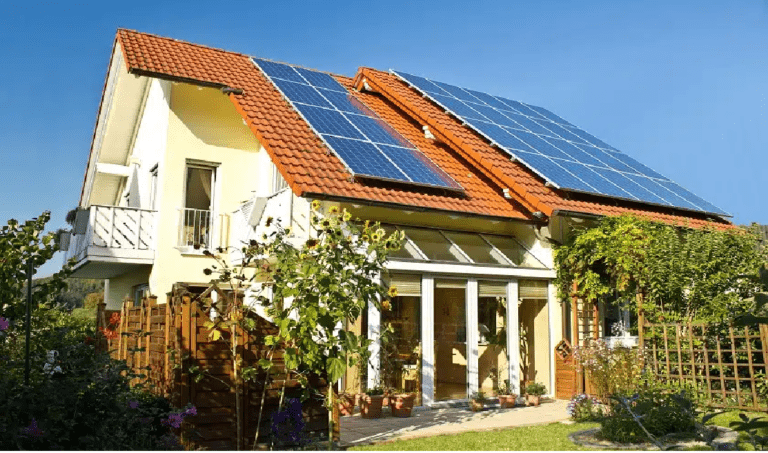
“I appreciate the detailed explanation, very helpful!”
“Amazing post, keep up the good work!”
Your article helped me a lot, is there any more related content? Thanks!